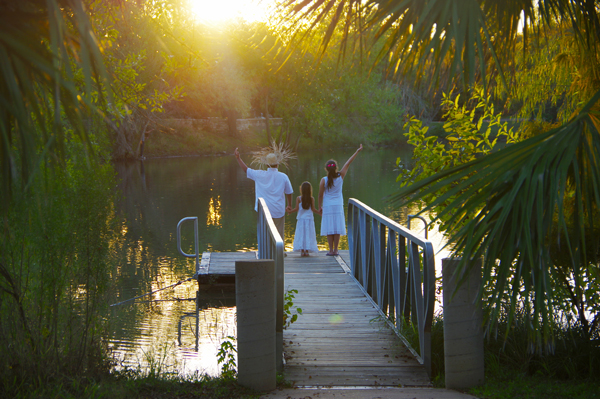
Borinki Soy was written by Tekina-eiru during the summer of 2016. What an amazing experience it was to learn oral and documented history from Taino Jesus Reyes (Juncos), and history in first-person from Puerto Ricans living in Hawaii whose families lived it, including Marian Montalbo and Kathy Marzan Montalbo (Hawai'i), and Clifford Pagan (Maui). How do you turn the most challenges moments in life into your deepest faith? Learning the history behind this play was an inspiration.
Borinki Soy shares the story of the first Boricua Migration to Hawaii in 1900, an original script based in oral and documented history. In the 19th century, Puerto Rico was one of the Spanish Crown's leading exporter of sugar, coffee, tobacco, and cotton. The U.S. take-over in 1898 adversely impacted the island's economy thanks to the American industrialists with focus on sugar. The second blow came on August 8, 1899, when Puerto Rico experienced one of the longest-lived hurricanes in history. A Category 5 hurricane, San Ciriaco was the most destructive natural disaster in Puerto Rico's history. The loss of life and destruction of farmlands, especially in the Cordillera Central where the coffee plantations were located was immense, as the Hurricane entered the Island through the southeast and exited through the northwest. Disease and poverty became rampant. The government was powerless to alleviate the peopleÂ’s misery. Recovery was not possible in any reasonable timeframe.
While Boricuas were dying from starvation, in Hawaii, an oligarchy of US Sugar Corporations -- the BIG FIVE -- were in need of laborers to work their sugar canes. They wielded considerable political and economic power in the Territory of Hawaii, including banking, warehousing, shipping, and importing. In order for the sugar industry to be commercially profitable, it was necessary to import foreign laborers: from 1778 to 1878 the native Hawaiian population had dropped from 800,000 to 40,000 due to a series of epidemics introduced by Westerners to which the natives had no immunity. With the change in immigration laws after the 1898 US takeover, new source of labor were needed to replace workers from countries that were now off limits.
Puerto Ricans working for the Hawaii Sugar Planters Association in Ponce went into the highlands to recruit laborers. Recruiters received $1-5 per head for every successful recruit, and whole families were encouraged to go to encourage long term stability. Lured by 3-year oral contracts for work and benefits, Boricuas found themselves on a month-long journey to Hawaii, by ship (to New Orleans) and train (to San Franciso at gunpoint) to board ships to Hawaii. Listening for the train whistle, news reporters traveled in parallel, trying to get access to the laborers. Unfortunately, the Boricuas plight was not helped by the reporters as the media had a reputation of writing exaggerated stories (yellow journalism); the general public really didnÂ’t understand what was truly happening.
In San Francisco, the Boricuas staged a rebellion to avoid boarding the ship to Hawaii. Some escaped, but others were forced, dragged, beaten etc, to get on board. The first Boricua settlement in California was a result of a success escape by a number of laborers. From Hawaii, Puerto Rican laborers were placed on inter-island ships that would take them to one of 34 plantations spread across the Hawaiian Islands. Unfortunately, there was no documentation of Boricuas present on the ships manifests, so it was impossible to trace where people went. On the plantations, they were set on segregated camps, and were required to work even if they were sick. Their pay was lower than promised, and they didn't earn cash - only token that could only be used at the plantation-store. Whole families had to work just to survive. There was no hope to save enough money to get back home.
In a year's time, 11 voyages would bring 5000 Boricuas to Hawaii, only 100 would ever return. This play honors the Borinkis who never forgot who they were. They will never be forgotten! Our musical raises awareness of often-forgotten elements from Puerto Rico's rich heritage, and brings history to life for the actors, dancers, musicians, performing arts students -- and you, the audience -- who share in the experience. We hope you enjoy it!
We are grateful for oral history shared by Jesus Reyes (Juncos), Marian Montalbo & Kathy Manzan Montalbo (Hawaii), and Clifford Pagan ( Mauii), August 2016.
Sugar cane history (general and in Puerto Rico):
Hurricane San Ciriaco (1899)
Technology
IMMIGRATION TO HAWAII
We hold the banner high for Puerto Rico everyday!
Thank you in advance for your donation of any size!!
Become a SUSTAINING DONOR with a recurring MONTHLY donation!

Or DONATE through PAYPAL GIVING FUND (no fees are subtacted)!

